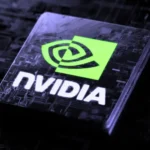Key Points
- DeepSeek AI models improve efficiency in inference tasks, giving Chinese chipmakers an advantage. Chinese firms have pledged support for DeepSeek models.
- DeepSeek’s open-source approach could drive AI adoption despite U.S. sanctions. Huawei’s Ascend 910B is already a strong option for inference workloads.
- Nvidia still dominates due to its superior training chips and CUDA software ecosystem.
- Huawei’s CANN aims to rival CUDA, but software support remains a major challenge.
The rise of DeepSeek’s artificial intelligence (AI) models is providing Chinese chipmakers like Huawei a better opportunity to compete in the domestic market against more powerful U.S. processors. Huawei and other Chinese semiconductor firms have struggled for years to match Nvidia in producing high-end chips capable of training AI models. Training requires massive computational power, and Nvidia’s dominance in this field has been difficult to challenge due to U.S. export restrictions and technological gaps.
However, DeepSeek’s models emphasize “inference,” an AI model concluding pre-trained data. Unlike training, inference is less dependent on raw processing power and more focused on computational efficiency. Analysts believe this approach could help close the performance gap between Chinese-made AI chips and their more advanced American counterparts.
Several Chinese semiconductor firms, including Huawei, Hygon, Tencent-backed EnFlame, Tsingmicro, and Moore Threads, have recently announced support for DeepSeek models. However, these companies have provided little detail about their specific implementations.
DeepSeek’s open-source nature and low costs are expected to encourage AI adoption across industries in China. This development could help Chinese companies bypass U.S. export restrictions that limit access to Nvidia’s most powerful AI chips. Even before DeepSeek’s rise, Huawei’s Ascend 910B processor was already being used by firms like ByteDance for inference tasks requiring less computational intensity than training. Many Chinese businesses, from automotive manufacturers to telecom providers, have announced plans to integrate DeepSeek models into their operations.
Despite these advancements, Nvidia remains dominant in the AI chip sector. While Chinese AI chips may be cost-effective for inference, they remain largely confined to the Chinese market. Nvidia can still sell less powerful AI chips to China for inference tasks, further reinforcing its position.
Additionally, Nvidia’s CUDA platform, which enables software developers to optimize applications for its GPUs, continues to be a major advantage. Some Chinese firms, such as Huawei, have introduced alternatives like Compute Architecture for Neural Networks (CANN), but experts note that Nvidia’s extensive software ecosystem remains difficult to match.









